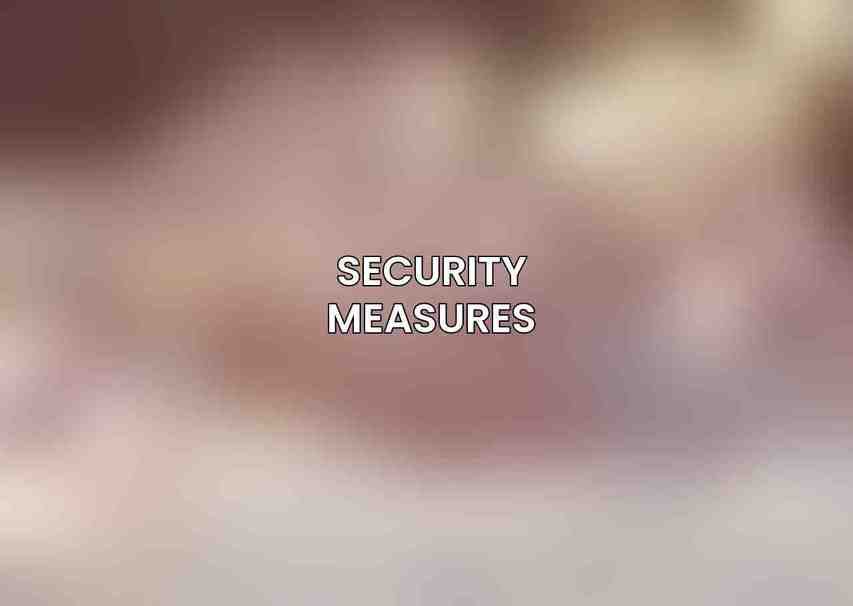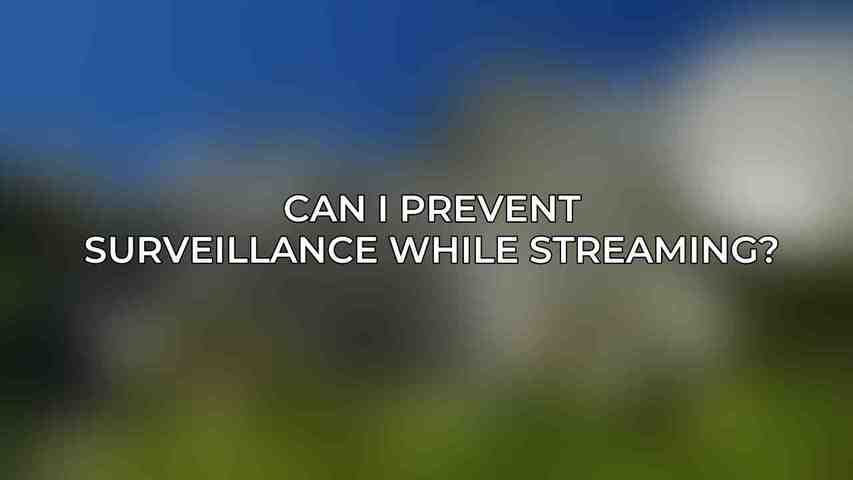Streaming surveillance refers to the monitoring and recording of live video or audio streams on the internet without the knowledge or consent of the streamer. This form of surveillance can pose significant privacy and security risks to individuals who engage in live streaming activities. Detecting streaming surveillance is crucial not only to safeguard personal privacy but also to ensure a safe and secure streaming environment. As the popularity of live streaming platforms continues to rise, the need to be vigilant against unauthorized surveillance becomes increasingly essential.
Detecting surveillance while streaming is not just a matter of privacy; it also raises ethical and legal concerns. The unauthorized monitoring of private live streams infringes upon individual rights to privacy and can lead to potential abuses of personal data. Moreover, in many jurisdictions, such surveillance activities may violate laws governing privacy and data protection. As such, being able to identify signs of streaming surveillance is paramount for streamers to protect themselves and their content. Read more on Streaming Services Privacy Policies: What You Need to Know
Signs of Streaming Surveillance
Detecting streaming surveillance involves being aware of various signs that may indicate unauthorized monitoring of your live streams. These signs can be categorized into technical indicators, behavioral indicators, and physical indicators, each providing valuable clues that surveillance may be taking place.
Technical Indicators:
- Unusual network activity, such as sudden spikes in bandwidth usage or connections from unfamiliar IP addresses, can suggest unauthorized access to your streams.
- The presence of suspicious software or processes running on your devices while streaming could indicate potential surveillance activities.
- Background noises or interference in your audio or video streams that cannot be explained by normal environmental factors may be a sign of covert monitoring.
Behavioral Indicators:
- The appearance of unfamiliar viewers or followers who exhibit overly curious or intrusive behavior during your streams could be indicative of surveillance.
- Persistent comments or questions from viewers that seek private information about you or your activities may signal unauthorized monitoring.
- Requests for personal data or access to your streaming accounts from unknown individuals should raise red flags about potential surveillance attempts.
Physical Indicators:
- Discovering cameras or recording devices in unusual locations within your streaming environment could indicate unauthorized surveillance taking place.
- Noticing strange noises or movements outside the view of your camera lens may suggest someone is surreptitiously observing your activities.
- Detecting unusual smells or odors in your streaming space that cannot be accounted for by normal means might indicate the presence of surveillance devices.
How to Protect Yourself
To mitigate the risks of streaming surveillance and safeguard your privacy while live streaming, implementing robust security measures, adopting secure streaming practices, and prioritizing personal safety are essential components of protection.
Security Measures:

- Using strong passwords and enabling two-factor authentication for your streaming accounts can help prevent unauthorized access to your streams.
- Regularly updating your software and devices with the latest security patches can close off potential vulnerabilities that could be exploited for surveillance purposes.
- Installing anti-malware software and firewalls on your devices provides an additional layer of defense against malicious surveillance attempts.
Streaming Practices:
- Exercise caution when sharing personal information or sensitive content during your streams to minimize the risk of privacy breaches.
- Limit your live streaming activities to reputable and trusted platforms with strong privacy and security features in place.
- Utilize privacy settings on your streaming accounts to regulate who can view your streams and interact with your content.
Personal Safety:
- Stay mindful of your surroundings while streaming and be alert to any unusual or suspicious behavior that could indicate potential surveillance activities.
- Trust your instincts; if something feels off or unsettling during your streams, do not hesitate to report it to the relevant authorities.
- Consider utilizing a Virtual Private Network (VPN) to encrypt your internet traffic and enhance the security of your live streaming sessions.
Additional Tips
In addition to the fundamental protection measures outlined above, there are several supplementary tips that can further fortify your defenses against streaming surveillance and uphold your privacy and security while live streaming: Read more on Essential Streaming Privacy Tips for Safe Viewing
- Encrypt Your Streams: Employ encryption software to safeguard your streams from interception and unauthorized access.
- Use Dedicated Streaming Software: Opt for professional-grade streaming applications that offer built-in security functionalities to better protect your live broadcasts.
- Monitor Your Activity: Regularly review your streaming logs and analytics to spot any anomalous behavior or patterns that may indicate surveillance activities.
- Educate Yourself: Stay informed about the latest surveillance techniques and privacy threats to stay ahead of potential risks and take proactive steps to protect your streaming activities.
the ability to detect and mitigate streaming surveillance is paramount for individuals engaged in live streaming activities to safeguard their privacy and security online. By being vigilant and proactive in identifying signs of surveillance, implementing robust security measures, adhering to secure streaming practices, and prioritizing personal safety, streamers can create a safer and more protected environment for their live broadcasts.
It is crucial to emphasize the importance of remaining vigilant against streaming surveillance threats, encouraging streamers to take proactive measures to shield themselves from potential risks, and reiterating the ethical and legal implications associated with unauthorized monitoring of live streams. By empowering individuals with the knowledge and tools to detect and combat streaming surveillance, we can foster a safer and more secure live streaming world for all participants.
Frequently Asked Questions
What is surveillance while streaming?
Surveillance while streaming refers to the monitoring and tracking of your online activity, including the content you stream, by an external party. Find more on 2024’s Secure Streaming Devices: A Comprehensive Review
How can I detect surveillance while streaming?
You can detect surveillance while streaming by looking for unusual network activity, frequent buffering during streams, or receiving targeted ads based on your streaming content.
Why is it important to detect surveillance while streaming?
It is important to detect surveillance while streaming to protect your online privacy, prevent data breaches, and maintain control over your personal information.
Can I prevent surveillance while streaming?

While it may be challenging to completely prevent surveillance while streaming, you can take steps such as using a VPN, ensuring your streaming platform is secure, and limiting the sharing of personal information.
What are some tools or technologies that can help me detect surveillance while streaming?
There are various tools and technologies available, such as privacy-focused browsers, ad blockers, and encrypted messaging apps, that can help you detect and prevent surveillance while streaming.

